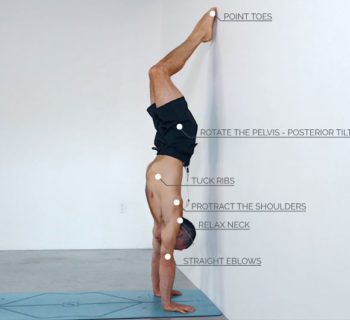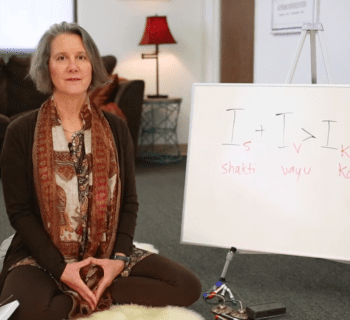Yoga is much more than just a physical practice; it’s a holistic way of life. The Yoga Sutras of Patanjali outline the eight limbs of yoga, providing a framework for spiritual growth and self-realization. While many people focus primarily on asana, or the physical postures, to deepen their practice, it’s essential to understand and incorporate the other limbs as well. The niyamas and yamas, the second and third limbs of yoga, respectively, serve as ethical guidelines for living a meaningful and fulfilling life. In this blog post, we’ll delve into the niyamas and yamas, exploring how to integrate them into your daily life, both on and off the mat.
What is the difference between yamas and niyamas?
As a yogi, you may have heard of the yamas and niyamas, two limbs of the eight-fold path of yoga. These principles serve as guidelines for ethical conduct and personal discipline, respectively, both on and off the mat. While they share some similarities, there are key differences between the two.
The yamas, often referred to as the “restraints,” comprise five ethical principles to guide our interactions with others. These include:
1. Ahimsa (nonviolence): Avoiding harming others, physically or emotionally.
2. Satya (truthfulness): Being honest with oneself and others.
3. Asteya (non-stealing): Not taking or stealing what does not belong to us, or using others for personal gain.
4. Brahmacharya (celibacy or moderation): Practicing self-control, particularly in regards to sexual behavior.
5. Aparigraha (non-attachment): Letting go of material possessions and desires that may distract us from our spiritual path.
In contrast, the niyamas, or “observances,” focus on our internal behavior and personal discipline. There are five niyamas, including:
1. Saucha (purity): Keeping our bodies, minds, and surroundings clean and clear of impurities.
2. Santosha (contentment): Being satisfied with what we have, rather than always seeking more.
3. Tapas (discipline): Cultivating self-discipline through dedicated practice and effort.
4. Svadhyaya (self-study): Engaging in self-reflection and self-awareness to better understand ourselves.
5. Ishvara pranidhana (surrender to a higher power): Letting go of the ego and surrendering to a higher power or universal consciousness.
While both the yamas and niyamas are important moral codes to follow, it’s essential to understand their distinct differences and how to use them as a map to guide your daily life.
How do the yamas and niyamas affect ones spiritual path?
When we practice the yamas and niyamas, we create a foundation of ethical behavior and self-discipline that helps us to progress along the spiritual path. By observing non-violence, truthfulness, non-stealing, and non-greed, we create a positive and peaceful environment around us. We learn to be compassionate towards ourselves and others, which can aid in our personal growth and development. By practicing the niyamas, we cultivate self-awareness and self restraints, which can help us to maintain a steady yoga practice and progress toward spiritual enlightenment.
Integrating the yamas and niyamas into our daily lives can be a challenging but rewarding process. It requires a commitment to self-awareness and a willingness to reflect on our attitudes and behaviors. However, this process can lead to greater inner peace, harmony in our relationships, and a deeper connection to the divine. By practicing the yamas and niyamas, we can deepen our understanding of yoga and its philosophy, and bring its principles off the mat and into our daily lives.
How can we incorporate the yamas and niyamas into our daily lives?
By incorporating the yamas and niyamas into their daily lives, individuals can deepen their yoga practice both on and off the mat. These principles serve as a moral compass and guide individuals toward a more mindful and conscious way of living. They help individuals cultivate compassion towards others and develop a deeper sense of self-awareness and inner peace. As such, the yamas and niyamas are an essential component of Hinduism’sAshtanga Yoga system and offer valuable insights for anyone seeking to live a more meaningful and fulfilling life.
Incorporating the yamas and niyamas into your daily routine can seem daunting at first, but it is important to remember that these principles are not about achieving perfection. Rather, they are about cultivating awareness and making a conscious effort to live in accordance with your highest values. Here are some practical ways to integrate the yamas and niyamas into your daily life:
– Practice non-violence (ahimsa) by being kind to others and avoiding harmful behaviors such as gossiping or criticizing.
– Cultivate truthfulness (satya) by being honest with yourself and others in your thoughts, words, and actions.
– Practice non-stealing (asteya) by respecting others’ belongings and avoiding taking things that do not belong to you.
– Embrace non-excess (brahmacharya) by practicing moderation in all areas of your life, including food, drink, and material possessions.
– Practice non-possessiveness (aparigraha) by letting go of attachments to material possessions and cultivating gratitude for what you have.
– Practice cleanliness (saucha) by keeping your body, mind, and environment clean and organized.
– Cultivate contentment (santosha) by focusing on the present moment and finding joy in what you already have.
– Practice self-discipline (tapas) by setting goals and working towards them with dedication and commitment, while also avoiding harmful habits and behaviors.
– Cultivate self-reflection (svadhyaya) by taking time for introspection and self-study, such as through journaling or meditation.
– Embrace devotion (ishvara pranidhana) by recognizing and surrendering to a higher power or purpose, and practicing gratitude for the blessings in your life.
Incorporating the yamas and niyamas into your daily life requires consistent effort and mindfulness, but the benefits are profound. By living in alignment with these principles, you can cultivate a deeper sense of inner peace, develop stronger relationships with others, and experience greater fulfillment and purpose in your life. Whether you are a seasoned yogi looking to deepen your practice or a beginner just starting out, integrating the yamas and niyamas into your daily life is a powerful way to harness the transformative power of yoga and live your highest truth.
Photo by Lili Popper on Unsplash










